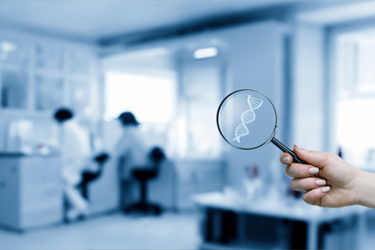Gene Editing Versus Gene Therapy: Is There A Difference?
By Brent Warner, President, Gene Therapy and Blair Madison, Ph.D., Chief Scientific Officer, Gene Therapy at Poseida Therapeutics

In the rapidly evolving realm of genetics, delving into the complexities of genome editing and gene therapy is paramount. To truly grasp and communicate their potential impact, we must navigate the nomenclature that underlies these groundbreaking technologies and explore the latest advancements in genome medicine.
Decoding the Nomenclature
The concept of gene therapy traces its roots to a time when the main genetic tools available were viruses, generally viewed as naturally suited for gene delivery and/or insertion. This historical legacy has persisted ever since. Shifting forward, Cas-based gene editing and other RNA-guided variations represent relatively recent, but pivotal, additions to our arsenal of gene-modifying tools. These tools can now be used to help formulate therapies addressing a multitude of genetic diseases. Endeavors employing these strategies often fall under the umbrella of gene editing. Let's clarify the accepted distinction between gene therapy vs. gene editing.
Gene Therapy: The Goal to be Achieved with Any Available Tools
The key is to separate the goal that we want to achieve from the approach. In gene therapy, the main goal is to make people better through an effective therapy. How we do it is the means to an end, and there are many technologies available. When dealing with genetic defects, there are generally three overarching strategies contingent on the specific nature of the genetic disease: knockout, correction (e.g. precision gene surgery), and insertion/addition. Different technologies have been developed for each approach. Viruses are good at getting genetic material into cells, which could be harnessed for gene addition or replacement. The goal with a viral vector is to correct a genetic disease through gene insertion (or replacement) and is thus a gene therapy. Similarly, CRISPR is excellent at cutting DNA and deleting small stretches of sequences in the genome. Similar to the application of a virus (as a vector), it becomes therapy only when the deletion aims to provide a functional or phenotypic resolution of a disease.
In short, gene therapy is our goal, regardless of how we achieve it. The technology outlines the methodology or approach, regardless of what we aim to achieve. Our goal is therapy through genetic modification. Let’s expand on types of genetic modifications.
Gene Editing: A Precise Intervention
Now, turning to gene editing, we mainly focus on specific technologies. CRISPR is a leading example. However, new technologies are emerging. Base editing allows targeted changes to specific DNA bases in a sequence, while prime editing can insert small stretches of DNA sequence. Though these technologies excel in making small, precise and targeted edits, progress has been made in harnessing their potential for inserting larger genes using DNA recombinases.
This leads to one final distinction: editing vs. insertion. Editing is like editing a document – in the editing process, you might remove some characters, correct spellings, or even insert a word here and there. However, if you consider “editing”, as performed by an editor at a publisher, an editor would not replace an entire chapter (that would be left to the author). Rather, if you were to replace such large functional sections (like a gene), one would consider this insertion or addition.
With this distinction in mind, the discussion can proceed with a little more clarity. Our overarching objective is gene therapy, aimed at improving an individual’s well-being. Gene editing represents one of our methods, primarily involving small changes. If our therapeutic goal is to restore gene function, we can take a different path – gene insertion. We may still use technologies like CRISPR or alternatively, opt for a technology such as Poseida’s non-viral piggyBac® DNA Insertion System, which evolved (and has been optimized) to insert DNA sequences without the need for any viral components, and is well-suited for restoring gene function.
Advancements in Editing and Insertion: Where We Stand
We are in an exciting era of gene editing with first-generation technologies progressing through regulatory bodies, offering new therapeutic possibilities. Continued advancements in genetic medicine hold great promise for delivering novel treatments to patients. The discovery of Cas-based gene editing has revolutionized genome editing, accelerating research, and showing promise in clinical trials.
Newer non-viral transposon insertion strategies enabled by Poseida’s enhanced super piggyBac transposase can provide the restoration of gene function with long-term expression, potentially overcoming efficacy and durability hurdles encountered with other insertion technologies. As the system is completely non-viral, we are able to overcome many of the challenges with traditional, or first generation AAV based gene therapies, which have been seen challenges related to treatable patient population due to seroprevalence issues, and a range of variability / durability issues. The ability to deliver large cargo with the piggyBac approach accommodates complete gene insertion and enables the correction of a variety of unique mutations found in a single gene for a given genetic disease. Base editing and prime editing require a different product and approach, each entailing costly personalized medicine for each individual mutation.
Offering Hope: The Promise of Gene Therapy
Gene therapy approvals are expected to rise in 2024, driven by the potential for transformative therapies despite manufacturing cost challenges. This marks a significant milestone for gene therapy into mainstream medicine, providing hope to patients with incurable conditions. The growing number of approvals highlights the combined potential of genome editing and gene therapy. Continued advancements in gene editing will build safer and more effective innovative treatments for patients in need, fulfilling a substantial gap and unmet need in gene therapies.
Embracing the Future
The journey of gene therapy is a testament to human ingenuity and the pursuit of healing. It's a story woven into our DNA, with each edit pushing the boundaries of what was once thought impossible. We are on the brink of a genomic revolution, where understanding and harnessing complex genetic tools brings us closer to treating once-incurable diseases and improving patients' lives.
At Poseida, we're at the forefront with our unique gene therapy approaches, including our Cas-CLOVER™ Site-Specific Gene Editing System and piggyBac® DNA Insertion System. These technologies hold immense promise for a range of genetic diseases.
In our laboratories, our teams are rapidly advancing the next wave of therapeutic possibilities and bringing forward non-viral solutions and theWrapies to help accelerate the genomic revolution. Poseida remains steadfast in its mission to harness our proprietary technologies and transform lives, one gene edit and one gene insertion at a time.
About the Authors

Dr. Madison is the Chief Scientific Officer of Gene Therapy at Poseida Therapeutics. Prior to his role at Poseida he led R&D efforts at Transposagen Biopharmaceuticals, from which Poseida would be spun out, and developed the initial piggyBac DNA transposon for functional genomics applications. In addition, Dr. Madison has been instrumental in the advancement of Poseida’s allogeneic CAR-T programs and has led the development of key technology platforms, including the Cas-CLOVER nuclease, and site-specific super piggyBac for applications in gene and cell therapies. Dr. Madison received his B.A. in Biology from Washington University and a Ph.D. in Cell and Molecular Biology from the University of Michigan.

Mr. Warner joined Poseida as President, Gene Therapy in February 2022, bringing significant biopharmaceutical experience in rare diseases and gene therapy. Most recently with Novartis as Vice President, Gene Therapy and Rare Disease, he was responsible for building a division to commercialize multiple gene therapies. His prior roles include serving as a U.S. commercial leader in Hemophilia A at BioMarin Pharmaceuticals, in a variety of strategic and operational roles at Biogen, and in commercial launch roles in blood disorders at Baxalta, now a wholly owned subsidiary of Takeda. Mr. Warner has an MBA with an emphasis in marketing and finance and a Bachelor of Business Administration degree, both from Northwood University in Michigan.
